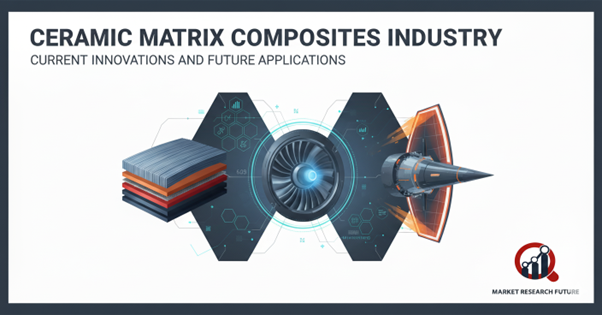All About Ceramic Matrix Composites!

Insights into the Ceramic Matrix Composites Market
When we think of ceramics, we often picture beautiful teacups, artistic vases, or skillfully made earthen pots with interesting shapes. People also remember ceramics for how beautiful they are and how easily they break and don't hold up to impact. To get around these problems, scientists and engineers started testing composite structures, which led to the development of Ceramic Matrix Composites (CMCs).
Ceramics are the matrix and the reinforcement in CMCs, which makes them tougher, stronger, and much more durable than regular ceramics. This new idea has made it possible for many different industries to use it where performance in extreme conditions is very important.
The history of CMC products
The aerospace industry was the starting point for CMCs' modern journey. The first big step forward was when CMCs were added to airplane engines to make them lighter, more durable, and able to handle very high temperatures. From then on, they changed the game for the next generation of aviation. Over time, CMCs have grown beyond aerospace and become very important in a number of high-tech fields where durability, heat resistance, and efficiency are very important.
What sets ceramic matrix composites (CMC) apart?
CMCs are different from other structural materials because they are both light and very strong. CMCs make ceramics stronger by adding fibers to them. This makes them resistant to corrosion, more chemically stable, and able to handle a lot of stress without breaking down easily.
Owing to these special traits, CMCs are very useful in situations where materials have to handle high temperatures, quick changes in stress, and harsh environments. Because they work so well, they are a good substitute for metals and traditional ceramics.
How CMC is used in business
- The aerospace field: The aerospace industry has been the first to use CMCs. These composites are used in turbine engines because they make the engines run more efficiently and with less noise and vibration. CMCs let engines run at higher temperatures because they don't get too hot. This means better performance and lower emissions.
- Industry of Oil and Gas: People who work with oil and gas love CMCs because they don't break easily and last a long time. They are used in drilling to deal with harsh conditions and keep things stable, which makes them necessary for safe and effective exploration.
- The car business: The use of CMCs in the car industry is growing quickly. Because they can handle high temperatures and don't rust, they are great for clutches, brakes, and other parts that need to last. They also help lower vehicle emissions and make them more energy efficient, which is in line with the global move toward greener transportation.
- Other Uses: CMCs are moving into electronics, defense, industrial machinery, and even niche areas like pesticides and leather processing, in addition to these core industries. As industries look for new materials that can improve performance, their versatility keeps growing.
CMCs have many benefits, but they also have some problems:
- High Cost: Making CMCs requires expensive raw materials and complicated processes, which makes them harder to use by a lot of people.
- Slow Processing: Because they can handle high temperatures, they need to be processed slowly and with care.
- Density Issues: CMCs are strong, but their hardness makes machining hard and expensive.
- Strength Limitations: If you don't process or cut them correctly, they can lose strength, which makes them less reliable.
These problems show why CMCs, even though they are revolutionary, are still more common in high-value industries like aerospace than in everyday consumer goods.
Final Thoughts
Ceramic Matrix Composites are a new kind of advanced material. They are changing the way businesses think about efficiency, sustainability, and performance because they are light but very strong. CMCs are paving the way for a future built on smarter, tougher, and more sustainable materials. They do this by cutting down on fuel use in aerospace and automotive, and making oil, gas, and other products more reliable.
As businesses look for ways to balance cost, efficiency, and durability, CMCs are likely to become even more important in 2025 and beyond. Their story isn't just about using new materials instead of old ones; it's about changing whole industries with new ideas that meet the needs of the future.

Leave a Comment